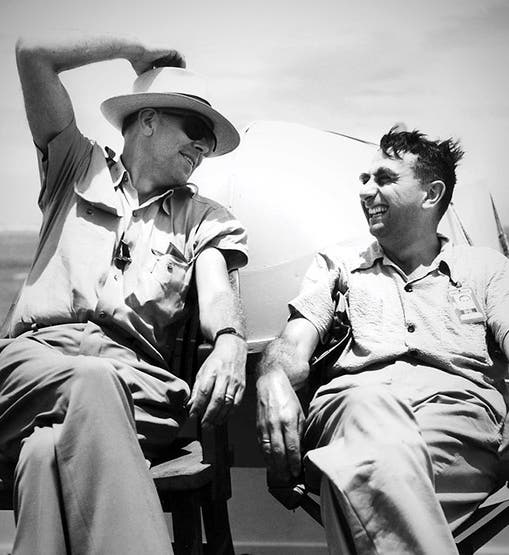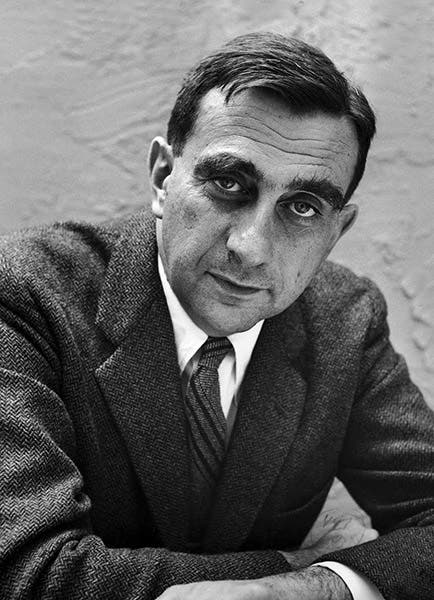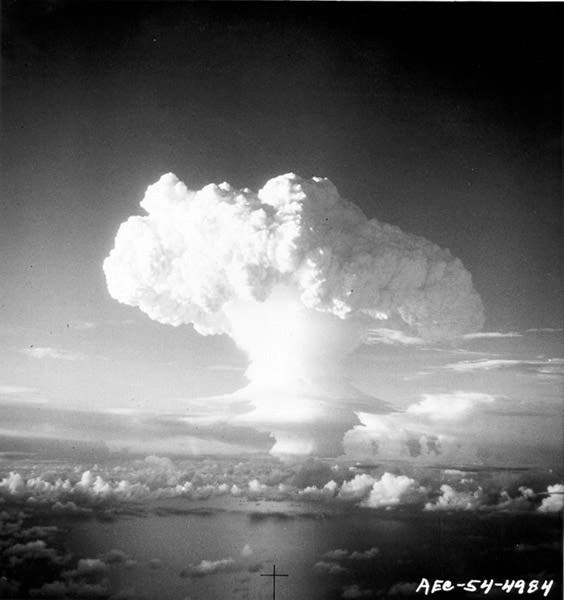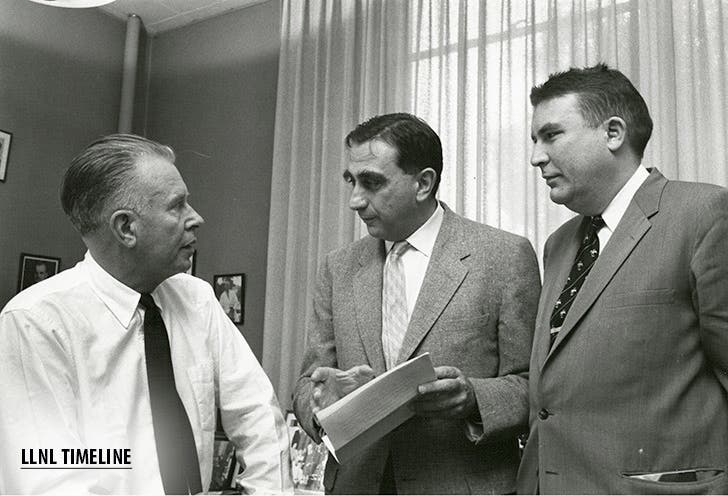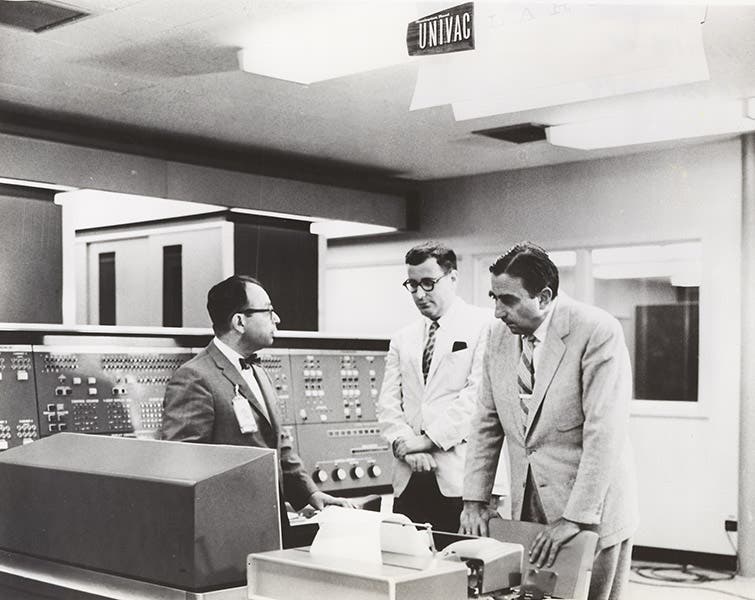Scientist of the Day - Edward Teller
Edward Teller, a Hungarian/American physicist, was born Jan. 15, 1908, in Budapest. He came to this country in 1933, at the invitation of George Gamow at Georgetown University in Washington, D.C. In 1939, he was among the first American physicists to realize the implications of the splitting of the atom in 1938 and to join efforts to see if an atomic bomb could actually be built. He joined the Manhattan Project in 1942, starting out working with Enrico Fermi in Chicago, building the first reactor, and then moving on to work for Robert Oppenheimer in Los Alamos in 1943. Teller was a brilliant physicist and had expectations of heading up the Theoretical Physics division at Los Alamos. But Oppenheimer appointed Hans Bethe instead, and Teller never recovered from the disappointment. He lost interest in fission bombs, and instead began to advocate the development of a fusion bomb. Oppenheimer kept the restraints on Teller until 1945, but after the war, Teller became the foremost advocate for what he called "the Super," a multi-megaton hydrogen fusion bomb.
Teller stayed on at Los Alamos, but in spite of his repeated claims up through 1950 that the Super was just around the corner, in fact, his original design would not work. It was not until 1951, when Stanislaw Ulam figured out how to use a fission device to compress the deuterium so that it would “burn” properly, that a fusion bomb really became feasible. Teller then modified Ulam’s proposal (by using radiation rather than neutrons to compress the deuterium), and a successful bomb was soon designed and built.
The first thermo-nuclear device, as hydrogen bombs came to be called, was exploded at Eniwetok atoll (now Enewetak) in 1952, the same year that Teller and E.O. Lawrence founded the University of California Radiation Laboratory at Livermore (now Lawrence Livermore National Laboratory), the nation’s second nuclear laboratory. The device, like all later such weapons, used what is commonly referred to as the Teller-Ulam design, although Teller later refused to give Ulam any credit and claimed for the rest of his life that he and he alone was the "father of the hydrogen bomb."
Most of his colleagues put up with Teller, because he was smart and did important work, even if he was sometimes difficult to get along with, but nearly all of them abandoned Teller after 1954, when he testified against Oppenheimer at the hearings that removed Oppenheimer's security clearance – the only scientist to do so. Teller was relatively ostracized for most of the rest of his life, which was a long one (he died in 2003, at the age of 95). Richard Rhodes, in his book Dark Sun, called Teller the "Richard Nixon of American science." I am not sure what that means exactly, but it sounds quite sinister, and it is an epitaph I should not like to have on my tombstone.
One physicist who forgave Teller was Freeman Dyson, who knew Teller well. In his book, Disturbing the Universe (1979), Dyson pointed out that Teller, as a Hungarian, was terrified by Stalin, and would do whatever it took to make sure that the U.S. had a fusion weapon before the Russians did. His fatal flaw is that he had to venture into the political arena to achieve his ends. Dyson found Teller warm and friendly and called him a friend to the end.
Dr. William B. Ashworth, Jr., Consultant for the History of Science, Linda Hall Library and Associate Professor emeritus, Department of History, University of Missouri-Kansas City. Comments or corrections are welcome; please direct to ashworthw@umkc.edu.

